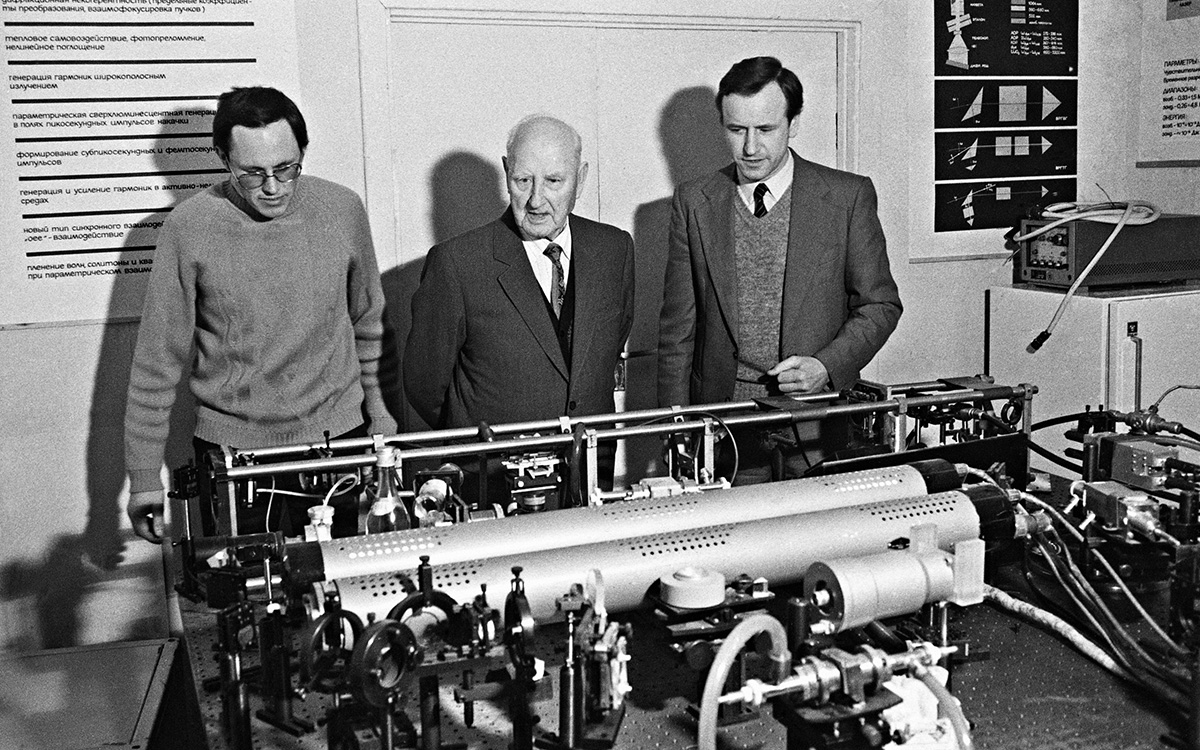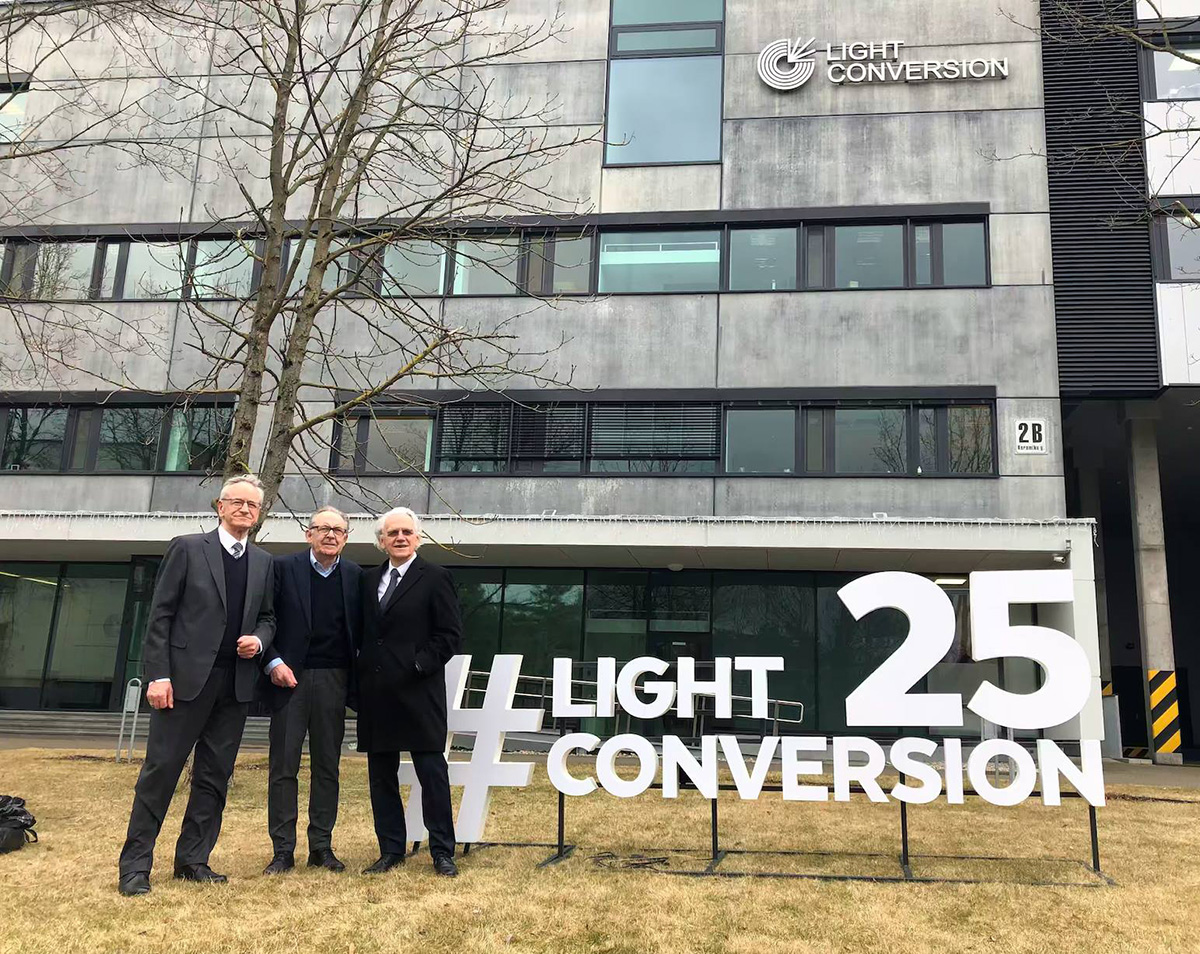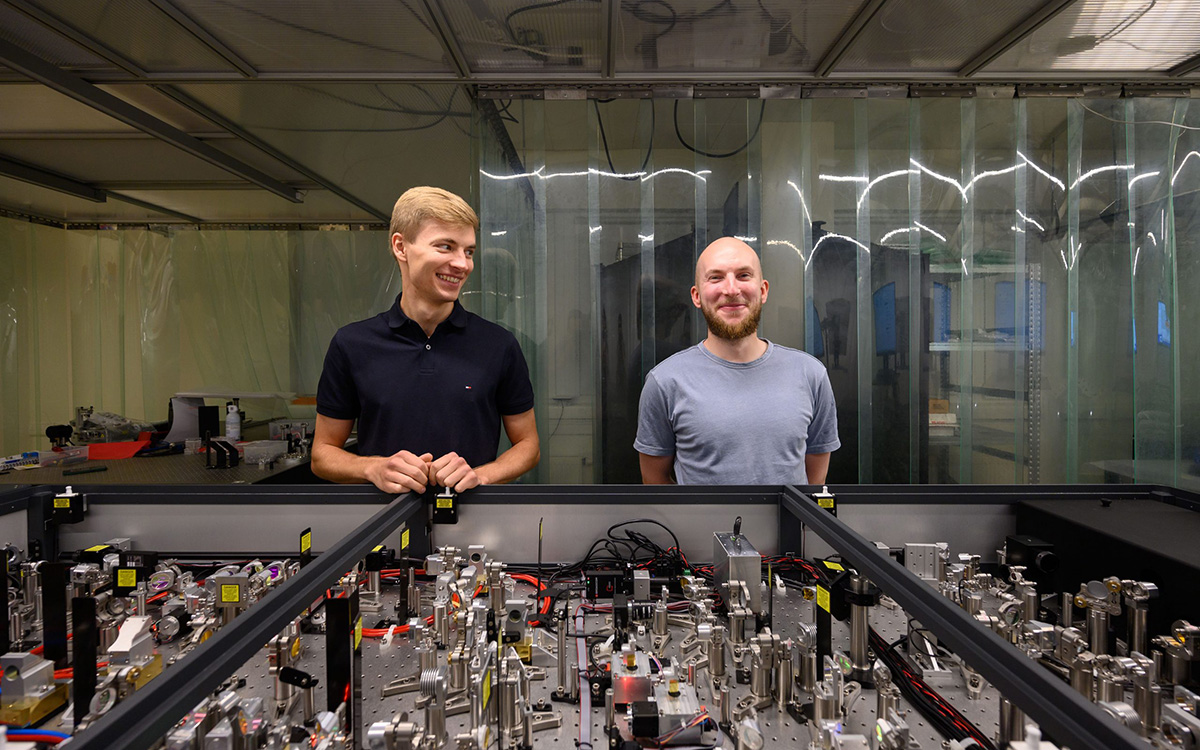Author: Morta Marcinkutė.
Humanity has been through multiple legendary and highly influential decades. We all must agree that the 90s, without a doubt, was one of these decades. It was the time when an idea of a “World Wide Web” started its journey into our homes, where it was impossible to get a Furby, and where the very first text message was sent. It was simply “Merry Christmas.” We are not that complicated after all.
However, these were not the only 90s phenomena with such a massive effect on us. Let us talk about a particular one that occurred in a more local – laser – world. It might not be as well-known globally as the aforementioned ones, but it, too, had a significant impact on us. It is a technology of Optical Parametric Chirped-Pulse Amplification (OPCPA).
The very beginning of the OPCPA
For some people, these five OPCPA letters are encrypted in their daily life, while for others – it is just five letters put in random order. It is not a surprise, but an abbreviation of OPCPA is actually not random.
These five OPCPA letters started to come together in the famous ’90s when the first proof-of-concept experiment on stretching, amplification, and compression of chirped pulses in an optical parametric amplifier (OPA) was demonstrated. It happened exactly 30 years ago, in 1992. Yet another great anniversary to celebrate in 2022.
This experiment was performed by a Vilnius University research group led by LIGHT CONVERSION co-founder Professor Algis Petras Piskarskas. Throughout his life, Prof. A. P. Piskarskas made an immeasurable contribution to establishing not only a Lithuanian laser community but the global one as well. His lifetime work and achievements are important cornerstones in laser science.

An indivisible part of the OPCPA – the Chirped Pulse Amplification
2018 was a significant and memorable year for the laser science community. That year the Nobel Prize in Physics was jointly awarded to Prof. Gérard Mourou and Prof. Donna Strickland “for their method of generating high-intensity, ultra-short optical pulses.” This chirped pulse amplification (CPA) method revolutionized the whole laser science.
The CPA method finally enabled to increase the power of ultra-short pulses without causing any optical damage to a lasing medium itself. This discovery opened a black hole for potential applications of laser science – from studying fundamental physics principles to treating deep-tissue brain cancer or performing laser vision corrections. A pretty wide range, yes.
Why is the CPA alone not enough?
As groundbreaking as the CPA method was, for some practices, it is simply not sufficient. There are multiple scientific applications that require high-intensity pulses at different spectral ranges and a high repetition rate – properties that the CPA technique only itself cannot offer. However, if we would look back into the 90s again, take then demonstrated concept of OPA and combine it with the CPA technique, we would finally conclude the full order of these five OPCPA letters.
As briefly mentioned before, it was Prof. A. Piskarskas, together with Prof. G. Jonušauskas and Prof. A. Dubietis, who published the article on the concept of OPCPA. The team proposed that using high-energy pump pulses to amplify a chirped and stretched signal in OPA will allow boosting the power of femtosecond pulses up to a terawatt level. As a result, the OPCPA technology enabled scientists with these high-intensity and high-repetition-rate properties, the ones that the CPA technique was lacking.

What makes the OPCPA technology so desirable?
Since then, the OPCPA has become a globally recognized and rapidly developing amplification technology for high-power femtosecond pulse generation. Eventually, more powerful systems have been demonstrated that are currently able to reach peak powers at a petawatt level.
Moreover, the OPCPA technology has been used to generate pulses characterized by not only ultrahigh power but by extremely short pulse duration as well. Such few-cycle pulses have been experimentally obtained in the visible (VIS), near-infrared (NIR), and mid-infrared (MIR) spectral ranges.
All these improvements led to the fact that currently, the OPCPA is the only laser technology that simultaneously provides properties like high peak, average power, and few-cycle pulse duration. This technology gave a higher degree of flexibility and therefore amplified the already wide range of laser applications.
From the concept to the complete OPCPA systems
It was (and still is) an incremental development process that did not happen over a night. Even though the concept of OPCPA was already proven in the 90s, it took another decade to advance it from a laboratory in Vilnius to a global commercial sector.
LIGHT CONVERSION was the first company that, in 2002, applied the OPCPA technology to OPA (specifically, to its TOPAS-White line) and made it available on the market. This was the first big step towards designing the complete OPCPA systems, which were finally launched in 2014. Since then and up until this day, LIGHT CONVERSION has continued to improve its OPCPA systems and expands the line with new products.
Everything needed for the OPCPA under the same roof
To be able to design and offer these state-of-art OPCPA systems to the market, in-depth knowledge and understanding of laser science are obviously mandatory. Nevertheless, what can truly bring you to the top of the OPCPA game is the accessibility of product and facility resources. And not all companies have a hold of these resources.
LIGHT CONVERSION started as a company putting its one of the main focuses on establishing and producing femtosecond lasers. This fact puts LIGHT CONVERSION ahead in the game since it already has a wide and diverse range of globally acknowledged products manufactured in-house.
What can LIGHT CONVERSION offer in the OPCPA game?
Taking advantage of available resources, LIGHT CONVERSION built the OPCPA systems using its in-house developed front ends, specifically PHAROS and CARBIDE femtosecond lasers. Both laser series offer industrial-grade stability and reliability, which enables, for example, the ORPHEUS-OPCPA system to deliver few-cycle, CEP-stable pulses without taking almost the whole floor in usually already small laboratories or working spaces.
Additionally, the same ORPHEUS-OPCPA system may also serve as a seed source for larger amplifiers. Due to inherently high-contrast output pulses, the ORPHEUS-OPCPA systems have been adopted as front ends in several ultra-high-intensity lasers. Certain advantages over other temporal contrast enhancement techniques made this adoption possible. Pulses with relatively high contrast (reached in optical parametric amplifiers) are further amplified in laser amplifiers up to ultra-high energies. It allows the delivery of background-free pulses with near-single-cycle bandwidth, excellent spectral phase coherence, and CEP stability – all these features simultaneously, conveniently developed in the same house.

A beneficial development environment for the OPCPA
Possession of such diverse and significant resources inside LIGHT CONVERSION already creates an excellent environment for new and innovative product development. On top of that, LIGHT CONVERSION is surrounded by many other global laser scene leading companies, which elevates this advantageous environment even more.
In a district of Vilnius alone, there are more than 50 companies working in the laser sector! A huge achievement for a country with less than three million people living in it. Among many other talented Lithuanian scientists, credit for this brilliant statistical deviation should be given to Prof. A. P. Piskarskas. His pioneering developments and lifelong achievements in laser science highly contributed to the fact that a tiny country like Lithuania has such an enormous and dense cluster of the laser industry.
There is no doubt that brilliant products are constantly emerging from this cluster. For example, an OPCPA system built by LIGHT CONVERSION in collaboration with another Lithuanian laser company EKSPLA – SYLOS single-cycle laser at ELI-ALPS (Extreme Light Infrastructure Attosecond Light Pulse Source).
What is next on LIGHT CONVERSION’s agenda?
And LIGHT CONVERSION did not stop there. Since the SYLOS at ELI-ALPS, the company has produced over five high-energy OPCPAs with sub-10 femtosecond pulses reaching hundreds of millijoules. Multiple table-top ORPHEUS-OPCPAs were also produced. These products are being applied in a range of high-energy attosecond pulse generation, laser electron acceleration, and nuclear waste decomposition. Again, a fairly diverse and broad range of applications, and other ingenious applications are yet to be defined.
So, a lot of amazing and influential things have happened since the famous 90s. Some of the things born in the 90s are no longer relevant (Furbies, for example), and some have become as important as never before (try not to text a single “Merry Christmas” in December). The OPCPA technology is also a perfect example of the latter. And it applies not only in the local laser world but in the global everyday one as well.
